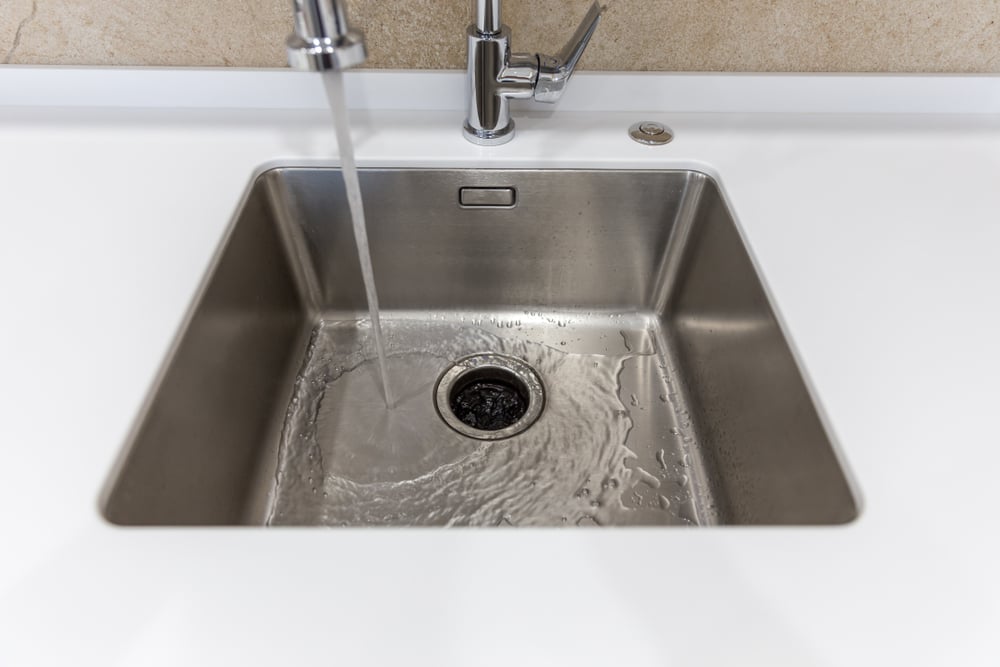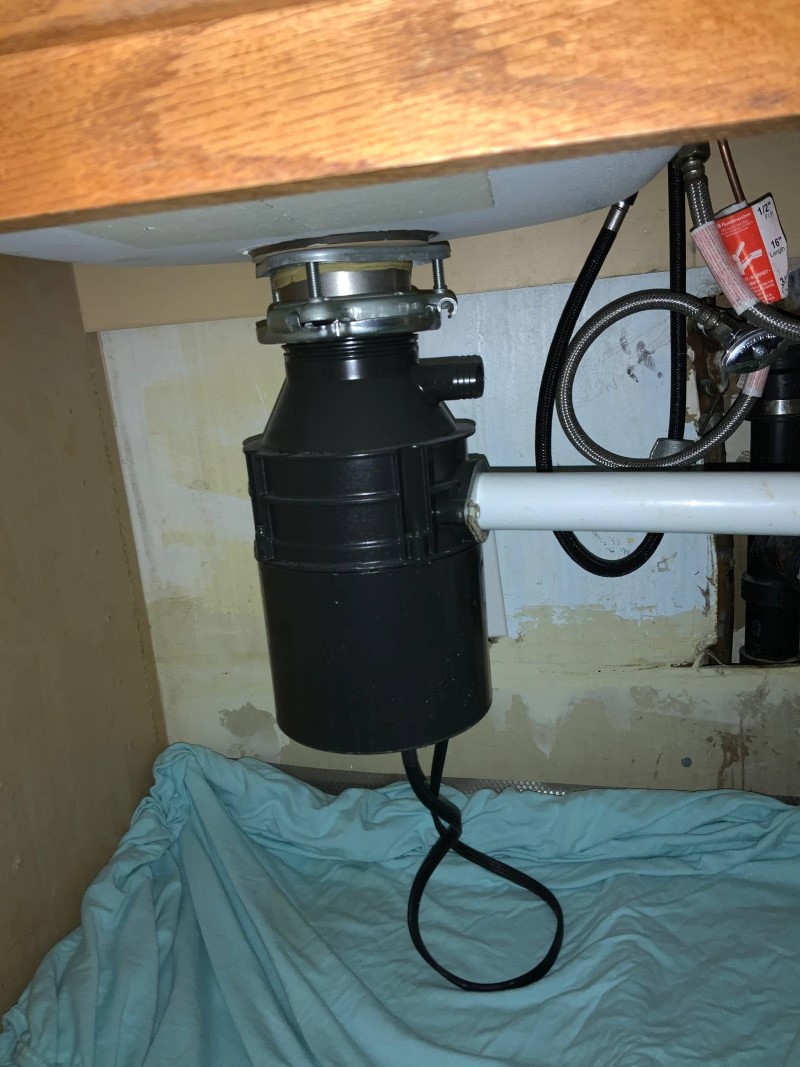Helpful Methods for Fixing a Dripping Garbage Disposal
Helpful Methods for Fixing a Dripping Garbage Disposal
Blog Article
Were you interested in guidance around Why Is ?

Waste disposal unit are necessary kitchen area devices that assist in throwing away food waste effectively. However, a leaking garbage disposal can be an irritating and messy trouble to take care of. Thankfully, lots of leakages can be dealt with easily with a couple of simple steps. In this write-up, we will go over how to fix a dripping garbage disposal successfully.
Introduction
Waste disposal unit are mounted under kitchen sinks and are created to shred food waste into smaller sized pieces, permitting it to pass through the plumbing system conveniently. While these gadgets are usually trustworthy, leaks can happen in time as a result of damage, loose links, or damage to the unit.
Common Reasons For Leaks in Waste Disposals
Worn Seals and Gaskets
Seals and gaskets play an important function in avoiding water from leaking out of the waste disposal unit. Gradually, these components can wear away, causing leaks around the disposal unit.
Loose Links
The connections between the garbage disposal and the plumbing system can end up being loose gradually, triggering water to leak out during procedure.
Cracks or Openings in the Disposal Device
Physical damage to the garbage disposal, such as cracks or openings in the real estate, can likewise cause leakages.
Identifying the Resource of the Leak
Before trying to take care of a leaking garbage disposal, it is essential to recognize the source of the leak. This can typically be done through aesthetic evaluation or by performing easy tests.
Visual Assessment
Inspect the waste disposal unit system very carefully for any signs of water leakage. Pay very close attention to locations around seals, gaskets, and connection factors.
Checking for Leakages
One method to evaluate for leakages is by running water through the disposal unit and checking for any visible indicators of leakage.
Tools and Materials Needed for Dealing With a Dripping Waste Disposal Unit
Prior to starting the repair work procedure, gather the required tools and materials, including a screwdriver, flexible wrench, plumbing's putty, replacement seals or gaskets, and epoxy or patching material for repairing cracks or openings.
Step-by-Step Guide to Dealing With a Dripping Garbage Disposal
Switch off the Power
Before attempting any kind of repair services, make certain that the power to the garbage disposal system is shut off to stop the danger of electric shock.
Find the Leak
Recognize the specific area of the leakage and figure out the cause.
Tighten up Connections
Utilize a wrench to tighten up any loose links between the disposal system and the plumbing system.
Replace Seals or Gaskets
If the leak is due to worn seals or gaskets, get rid of the old parts and replace them with new ones.
Patching Cracks or Holes
For fractures or openings in the disposal device, usage epoxy or an ideal patching material to seal the broken location.
Examining the Garbage Disposal After Repair Work
When the repair service is total, evaluate the garbage disposal by running water with it to make sure that the leak has actually been fixed.
Preventive Maintenance Tips to Prevent Future Leakages
To stop future leakages, it is vital to perform regular maintenance on your garbage disposal. This includes maintaining it clean, staying clear of placing non-food things or hard things down the disposal, and periodically checking for leakages or various other concerns.
Verdict
Finally, fixing a dripping waste disposal unit is a fairly straightforward process that can be completed with basic devices and products. By following the steps detailed in this post and practicing precautionary upkeep, you can keep your waste disposal unit in good working condition and avoid pricey fixings in the future.
HERE’S HOW TO FIX YOUR GARBAGE DISPOSAL
WHAT TO DO IF SOMETHING IS STUCK IN YOUR GARBAGE DISPOSAL
If the impeller won’t turn, there’s probably something stuck in the disposal. It could be a steak bone or peach pit, although plumbers report pulling all sorts of inappropriate objects out of disposals, such as bottle caps or aluminum foil. Make sure power to the disposal is off, and look inside to see if you can see the source of the jam.
Never stick your fingers in a disposal. Pull out anything you see with tongs or pliers.
If the disposal still won’t work, it may be time to call a plumber or consider buying a new disposal. GEM Plumbing & Heating is here for all of your garbage disposal needs.
WHAT TO DO IF YOUR GARBAGE DISPOSAL DRAIN IS CLOGGED
Take everything out from underneath your sink and put a bucket or other container under your disposal to catch any water that drains out. Disconnect your disposal from the power supply. If it’s plugged into a wall outlet, unplug it. If it’s hardwired into an electrical box, go to the electrical panel and turn off the breaker for the disposal. Pour ¼ cup of baking soda into the drain, followed by ½ cup of white vinegar. Give the solution a few minutes to fizz and do its work. Look into the disposal with a flashlight to see if you can see an object that might be causing the clog. If you see it, remove it using tongs or pliers. MORE TIPS ON DEALING WITH A CLOGGED GARBAGE DISPOSAL
Never use drain cleaner in a garbage disposal. It can damage the plastic parts inside the disposal. You can also be splashed with the caustic liquid while working to clear the clog. Beware! Never stick your fingers into a garbage disposal. Trust us — not a good idea. In many instances, your dishwasher drains through your garbage disposal. This allows the disposal to grind any large food particles that may be drained out of your dishwasher. There are some jurisdictions, however, where the plumbing code prohibits such a connection. WHAT TO DO WHEN YOUR DISHWASHER DRAINS THROUGH THE DISPOSAL
Run some water in the sink so your plunger has at least a ½-inch of water to create a seal and plunge vigorously up and down several times. You may need to repeat this several times. Run hot water down the drain to clear any residue that remains.

We were introduced to that article about Why Is from a friend on another blog. Loved our write-up? Please share it. Let another person locate it. Thanks for your time spent reading it.
Schedule Today! Report this page